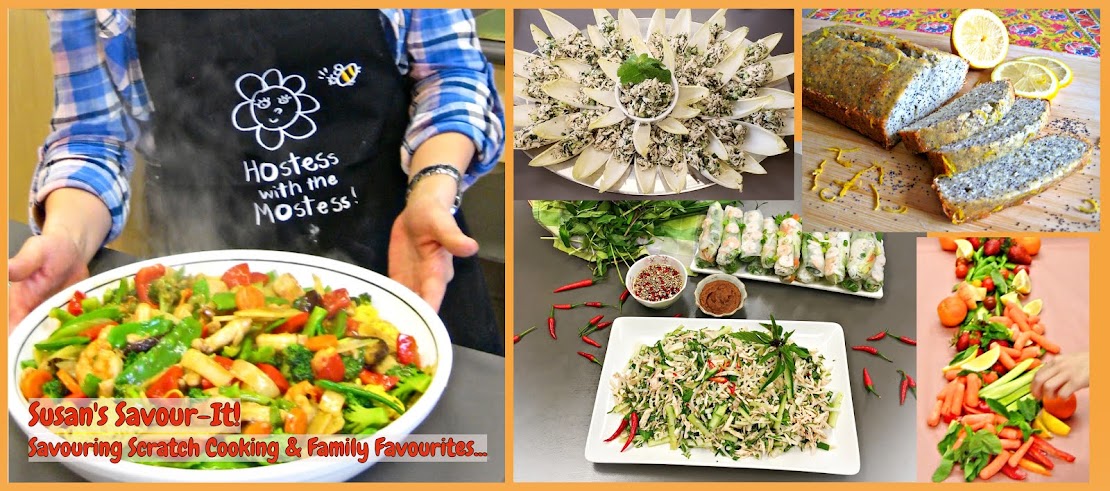Ethiopian cuisine is new to me despite having lived walking distance to a popular Toronto Ethiopian restaurant landmark more than a decade ago and a pulsing desire to try it. Eat with your hand as a utensil-- picking up various kinds of vegetarian and meat stews with pieces of injera bread and finishing off the meal with a coffee ceremony appeals to me. I finally tried the heavenly food late last year and I've been regularly dining on their vegetarian offerings at various locations in the city. Just not sure why I waited so long. So happy late than never. Many super-satisfying dishes that are healthy nutritious for vegetarian, vegan, gluten and lactose-free eaters that also gives meat a break. Something I will indeed explore in my kitchen very soon.
 |
| Enjoying a vegetarian platter with a side of fish stew (Asa Gulash) at Lalibela Ethiopian |
First, a little history on Ethiopia. Along with the countries of Eritrea, Djibouti and Somalia, these make up the region known as the Horn of Africa in its Northeastern part. Although among the poorest in the world, Ethiopia has an agricultural economy, with most of the people involved in subsistence farming. Interesting fact-- many coffee drinkers do not know that the birthplace of coffee plantations originated in the mountains of Keffa, a province of Ethiopia- the very word where 'coffee' comes from. The hot beverage is served to honour guests and elaborate rituals accompany the preparation of the drink.
Ethiopia is largely populated with both Muslims and Christians, and their influence makes their cuisine the most distinctive in Northeast Africa. Vegetarian dishes are prominent due to many fasting days of the Christian Church (with no consumption of meat or animal products), however, fish, mutton, beef and chicken abound on their menu and traditionally cooked in lots of butter. A great variety of fruits and vegetables are cultivated there with their staple food injera-- a thick, spongy pancake-like sourdough bread made from the smallest grain in the world-- teff (Ethiopia's principle grain). Injera is not only a food but it serves as a utensil and plate. Accompanying dishes are placed on it-- a bit of bread is torn off and used to wrap the food to eat. Widely used flavours of spicy and complexity include hot chilies, fenugreek, cardamom, ginger, cinnamon, mint, garlic and onions. Some of these aromatic spices and herbs are concocted in a fiery paste (herbere) that is used to cook in the stews or serve with the meal, particularly mutton dishes.
A typical dish consists of injera accompanied by a spicy stew, which frequently includes beef, mutton, vegetables and various types of legumes, such as lentils and chick peas. I always go for their vegetarian platter for two-- an array of colourful veggies and pulse stews to share with my dining companion. After eating up the accompanying rolled injera we dig into the injera "plate" below often soaked with the special sauces to finish the remaining morsels. Deelish!
 |
| Vegan platter at Ethiopian Vegan Restaurant |
Aside from grounding to make injera, whole grain teff is a great healthy addition to porridge, stews, pilafs or baked goods. It's mild nutty flavour, has a unique texture and packs a serious nutritional punch! Teff has an excellent balance of amino acids, and it is also high in protein, calcium, and iron. I add it when I cook rice-- it doesn't compromise the flavour and your kids won't taste a difference (this is one Ethiopian influence I have in my family food repertoire).
 |
| Teff is the tiniest grain in the world but packs a supergrain punch! |
Want an easy change up to your cooking routine? To give a simple health boost regularly with teff, add it to rice. For Chinese rice cooked in a rice cooker, add 2 Tbsp. teff to 2-1/2 rice cups measure of Jasmine rice and 1/4 cup more water. Teff will cook settled on the rice surface. Toss to mix. Your kids will see the little brown specks but won't taste it. Before you know it, it may be incorporated in your regular routine. I know it makes me feel better serving white rice.
 |
| Ethiopian Teff Stew (right)-- See Recipe |
 |
| Enjoying a cup of tea flavoured with cinnamon, cardamom, ginger and cloves. |
After an Ethiopian meal, one can enjoy the relaxing aromas of burning frankincense (an aromatic gum resin obtained from an African tree and burned as incense), and hand-roasting of coffee beans and ground by the hostess. It is custom for Ethiopians to drink the strong coffee with a pinch of salt or clarified butter and serve it with popcorn.
 |
| Photo Credit: Ethiopian Photo Gallery |
I am really looking forward to introducing this lovely and healthy cuisine with exotic flavours to my boys.


No comments:
Post a Comment
Note: Only a member of this blog may post a comment.